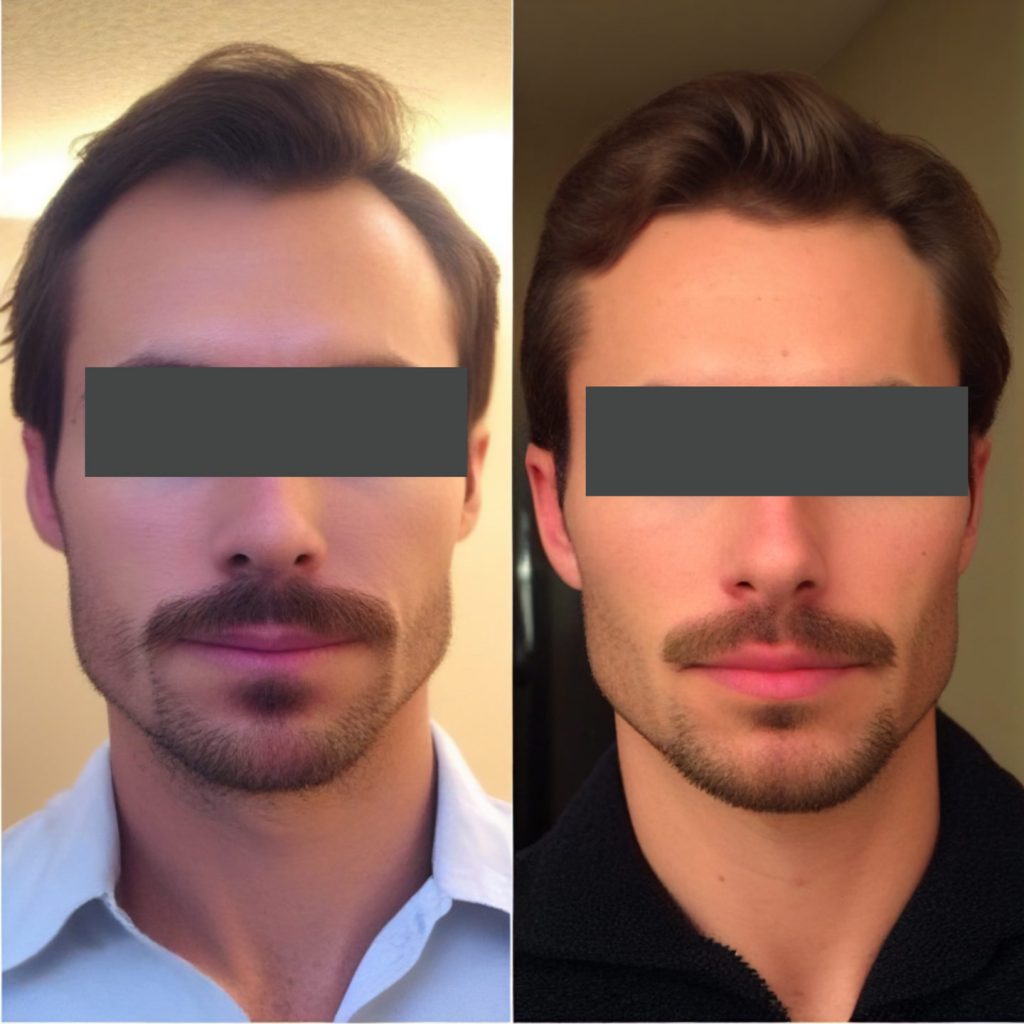Aesthetic physicians have developed innovative techniques for restoring hair growth, giving hope to millions of people who have been negatively affected by hair loss and balding. However, as the popularity of hair restoration procedures has increased, so have the myths and misconceptions about them. In this article, we bust 5 common myths about hair transplants and explain how this revolutionary procedure can yield incredible results when performed by an experienced professional.

First Things First: What Is A Hair Transplant?
A hair transplant is a surgical procedure in which hair follicles are removed from an area of the body with healthy hair growth and transplanted into another part of the body where the hair is thinner or has been lost entirely. In the case of head hair transplants, follicles are typically removed from the back of the head, where hair growth tends to be thicker and denser. Hair transplants can also be used to improve beard hair growth or restore eyebrows that have thinned through years of over-plucking.
There are two main types of hair transplant techniques: follicular unit transplantation (FUT) and follicular unit extraction (FUE). Whereas FUT involves the removal of an entire strip of hair follicles which is then divided into smaller segments before transplantation, FUE involves the removal of follicular units (small clusters of two to four follicles) which are then individually implanted in the skin of the receiving site. FUE is preferred by many aesthetic physicians, as it is less invasive, leaves less scarring in the donor site, and helps to create a more natural result.

Dispelling 5 Common Myths About Hair Transplants
Hair loss can have a devastating impact on your self-confidence and quality of life. You may experience social anxiety, low mood, and poor self-esteem as you struggle to adjust to your changing appearance. However, you don’t need to accept your fate: when performed properly by an experienced aesthetic physician, hair transplants can help you to achieve remarkable hair regrowth, restoring your confidence and giving you a new lease on life. To help you make an informed decision about whether a hair transplant is the right option for you, we’ve unpacked five common misconceptions about the procedure and its results.
1. Hair Transplants Look Unnatural
One of the most common myths about hair transplants is that they lead to unnatural results. However, FUE transplants are preferred precisely because they allow for the careful selection and placement of individually transplanted follicles. This allows the aesthetic physician performing the procedure to select the best follicles for transplantation, and to ensure that the angle, direction, density and thickness of new hair growth blends seamlessly with the rest of the patient’s hair and existing hairline. Nowadays, poor outcomes are almost always the result of hair transplants being performed by unlicensed technicians who lack the necessary training to carry out this highly complex aesthetic procedure.
2. Undergoing A Hair Transplant Is Painful
When performed by a licensed practitioner who is observing proper protocols, hair transplants are not painful. Local anesthetic is used, and while patients may experience some discomfort during the procedure, this should be tolerable. FUE transplants in particular are minimally invasive, and patients may only require mild painkillers after the procedure.
3. A Hair Transplant Leaves Noticeable Scarring
Although traditional FUT hair transplants tend to leave a scar where a strip of skin has been removed, FUE transplants leave only tiny dots where follicular units have been removed, and these often heal entirely. In cases where FUE procedures do leave tiny scars, these are easily covered by the surrounding hair and are not noticeable. By following proper post-procedure care on the transplant site as per your aesthetic physician’s instructions, the area receiving the transplant will also heal fully.
4. Hair Transplants Are Only For Men
It is an unfortunate misconception that only men suffer from genetic hair loss (also called androgenetic alopecia). Although male-pattern baldness is the most prevalent type of hair loss, female-pattern baldness can also occur, and involves the thinning of hair on the crown of the head (rather than a receding hairline). Hair transplants are just as suitable for women who suffer hair loss due to hereditary factors as they are for men. Eyebrow transplants are another type of hair transplant procedure popular with women.
5. Hair Transplants Yield Immediate Results
If you are considering a hair transplant procedure, it is important that you have a clear understanding of the length of time it takes for results to become apparent. In many cases, patients who are dissatisfied with the outcome of the procedure have not had their expectations properly managed. The transplanted follicles can take months to produce new hair growth, and depending on the degree of hair loss, multiple rounds of transplants may be necessary.
In most cases, it takes between 6-9 months for the full results of the procedure to become apparent. It’s also important to remember that not all follicles will successfully ‘take root’ – it is inevitable that a percentage of the transplanted follicular units will not produce new hair. Even follicles that are successfully transplanted may lose hair initially, as part of the natural shedding process that takes place in the hair growth cycle.

A Reputable Aesthetic Physician Is Here To Help You Get Your Confidence Back
Many of myths surrounding hair transplants stem from people who have had negative experiences after undergoing hair transplants at unlicensed clinics or in foreign countries where regulation of the aesthetic industry is lax. For this reason, it is important that you seek out a reputable, experienced aesthetic physician to assess your suitability for a hair transplant and perform the procedure.
Restorative Medspa’s acclaimed aesthetic physician, Dr Asma Ghafoor, has performed numerous successful hair transplants over her many years in practice. She uses the latest technology to deliver exceptional results for clients who are struggling with their self-esteem and confidence after experiencing unwanted hair loss. With her eye for detail, aesthetic flair, and impressive surgical skills, you can rest assured that your hairline will be safe in Dr Ghafoor’s hands.
To find out more about this life-changing procedure or to explore our range of hair restoration treatments, contact Restorative Medspa today at 630-441-4160.
You May Also Like
Benefits Of Laser Skin Resurfacing For Aging, Damaged, Or Uneven Skin
Laser skin resurfacing is the gold standard in aesthetic medicine for the treatment of deep wrinkles, scarring, and uneven skin tone…
Read MoreWhat Is Body Sculpting? Everything You Need To Know Before Your First Session
If you have tried to tone muscle, reduce cellulite, and achieve a slimmer appearance with disappointing results, a transformative aesthetic solution…
Read MoreWhy Young Adults Should Consider Hair Restoration Now
Hair loss at any stage of life is challenging, but experiencing hair loss as a young adult can be particularly distressing.…
Read MoreWhy Infrared Sauna Therapy Is Becoming The Go‑To Recovery Tool In 2025
Infrared sauna therapy is enjoying a rapid rise in popularity, and for good reason: not only does it provide users with numerous…
Read MoreHow Restorative Medspa Helps Men Improve Sexual Health Without Surgery
Being able to embrace and enjoy your sexuality is central to your emotional and physical well-being. Men who suffer from erectile…
Read MoreHow Tirzepatide Supports Safe And Sustainable Weight Loss
In the past few years, medical weight loss injections have completely revolutionized the treatment of obesity and excess weight. Gone are…
Read More






